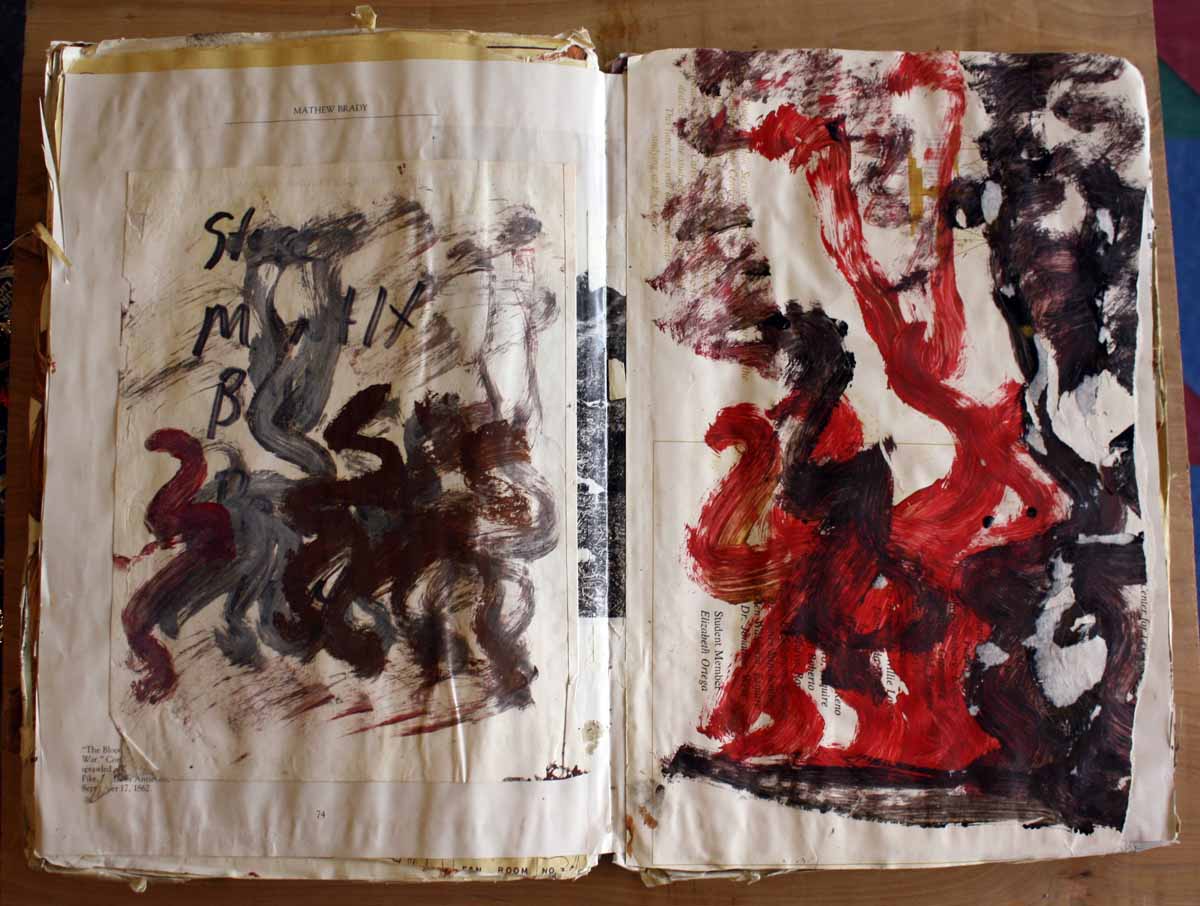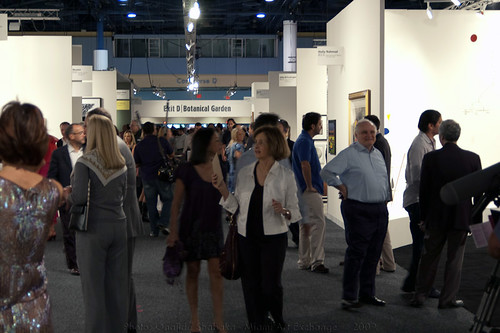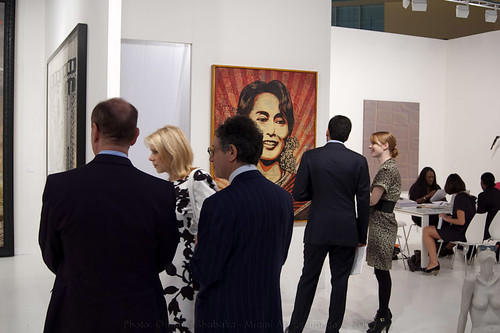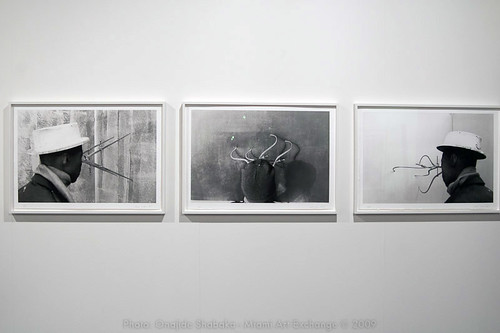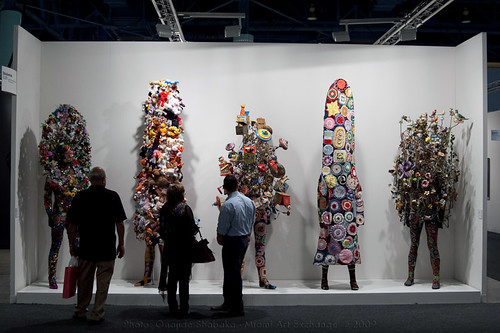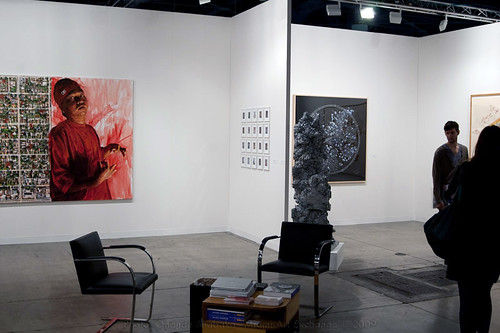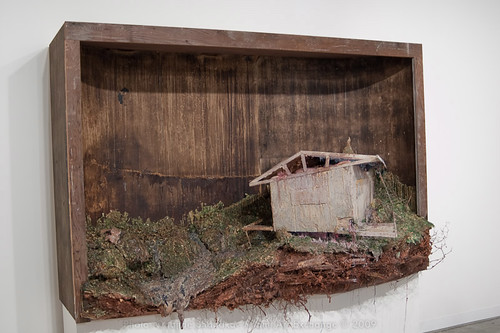Art Basel Miami Beach 2009, like every other year, had some changes in venues, galleries, and convention center layout. For the most part the fair was gridded across the convention floor as it usually is, but this year some of peripheral components were brought under one roof which made the fair a much better viewing experience. The shipping containers on the beach, which winds blowing sand into ones eyes and nostrils, had some drawbacks that have now become a non-factor.
The art, however, is big — much of it sized for museums, foundations and private warehouses. And the larger scene surrounding the event, which is now in its eighth year, remains daunting, with upwards of 15 satellite fairs and the usual calendar of dinners, parties, concerts and talks. From the evidence here, the art fair, as a species, is not endangered: collectors are too attached to its convenience and competitive vibe. (NYT)
One entry seemed to have garnered a large majority of the attention, Jeffrey Dietch Gallery. They had the Kehinde Wiley painting commissioned by Michael Jackson that apparently had not been paid for. The 32-year-old U.S. painter was contacted by Jackson in 2007 after the performer saw the artist’s work at the Brooklyn Museum of Art. It was a rather over-the-top representation, but I would think most could see Michael Jackson seeing himself painted in that fashion. I’m must too modest myself.
Latin American art is just as visible, both at and around the fair. Works from the circle of the Mexican artist Gabriel Orozco, whose Museum of Modern Art retrospective opens on Dec. 13, seem particularly widespread. And one of Mr. Orozco’s own pieces, a giant oval pool table, is a major element in the most talked-about off-site show, the Bass Museum of Art’s exhibition of works from the Jumex Collection. Based in Mexico City, it is Latin America’s most prominent private collection of contemporary art, and is being shown in the United States for the first time.
As usual, the Art Kabinetts, organized mini-exhibits within selected booths, are excellent. They range from a reprise of the Francis M. Naumann gallery’s recent show “Marcel Duchamp: the Art of Chess” to diagram doodles and zines by the painter Amy Sillman at Sikkema Jenkins.
Also in the Art Nova section, at Reena Spaulings, are Merlin Carpenter’s paintings of reviews from The New York Times. (We get it: critics are part of the market, whether we like it or not.) Other dealers who specialize in attitude and art fair shenanigans are noticeably absent — Gavin Brown, to name the most obvious one. Turnover was heavy. About 60 of last year’s exhibitors did not return, although others quickly replaced them; the fair added five galleries over all. (NYT)
This year’s changed configuration, confused and frustrated some visitors, but as mentioned it moved newer galleries from the containers on the beach to the convention center. For the most part, these galleries capitalized on their new location. Sarah Gavlak, a gallery from Palm Beach Co., featured surreal collages of people with neon colored plants instead of heads, and sculptures of sinking houses by Philip Estlund (below).
At the main event a clever redesign has distracted most visitors from the lower energy level, and has been generally well received. The most drastic change is the new centrality of Art Positions, a section of the fair dedicated to emerging galleries, which has been relocated from a nearby beach to a ring in the middle of the exhibition hall. Collectors seemed a bit disoriented at first, but no one missed the shipping containers that served as oceanfront booths in past years. (NYT)
Usually I have time to view the fair twice however, this year I was unable to do so because of an event Miami Art Exchange held in Wynwood. At the end of the day (of my visit) I came away with a sense of delight at seeing some really delicious works of art, and of course, seeing long time friends.
